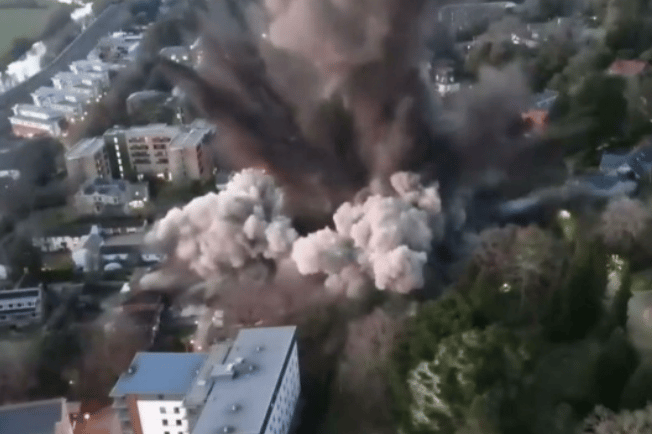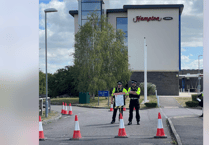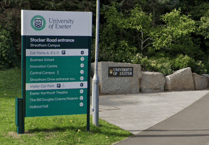EXPERTS believe Exeter took more of a battering from the Luftwaffe during the Second World War than the history books say it did.
A detailed risk assessment was carried out across the Exeter University campus in 2021 as part of a planning application involving new student accommodation.
The document has now resurfaced as a result of an application from the university to the city council to change the details of a project to demolish dozens of buildings on the Streatham campus to make way for more than 2,000 new student bed-spaces in blocks up to nine storeys high.
The risk assessment, by Kent-based specialist firm Brimstone Site Investigation, found that unexploded wartime bombs might still be hidden on the redevelopment site.
In March 2021 a 1,000kg German wartime bomb was found by builders on land next to the Streatham campus. It was later detonated by a bomb disposal team in an explosion heard up to five miles away. A number of homes were damaged.
Official records say the city was heavily attacked by German bombers in 19 raids during the war. More than 7,000 devices were dropped on Exeter, according to the records, particularly in May 1942 during the so-called ‘Baedecker’ raids.
They were named after a popular series of German travel guide books, and were targeted on cities with major cultural significance, the aim being to damage historic buildings and public morale.
German radio declared afterwards: “Exeter is the jewel of the west. We have destroyed that jewel, and we will return to finish the job.”
In total, air attacks on Exeter caused the death of 265 people and injuries to 687, of which 111 were serious.
Discussing the official accounts, Brimstone says: “Occasionally, the accuracy of some historical records can prove to be poor when compared with other sources of information. One significant consequence of this can be the possibility of unrecorded German bomb strikes in the study area.”
The report says a number of incidents recorded during a raid in May 1942 on the bomb census map are not recorded on the individual raid bomb plot map for the same date, which highlights the difficulties in accurate record keeping during frequent, intense bombing raids.
It goes on: “It is quite possible that additional local bombing incidents are missing from the maps. The anecdotal account suggests that the bombing over the (university) site was far more frequent than that recorded in official bombing records.”
Part of the report is an account written by a student, John Saunders, who was at the university during the war.
He wrote: “Reed Hall, which is right beside us, has had most of its windows blown out, but curiously enough Mardon is practically intact – only two holes in the windows. The shutters were wrenched open in the front of the building and a handle of one of the French windows was blown through the window of the common room.
“The reason is probably that all the bombs around us fell in soft earth. Anyway, we have had a narrow escape. One line of craters is in a straight line over us, two on each side, so it looks as if Jerry dropped a stick of bombs – (probably the four terrific explosions we heard) right over us and we were lucky in being in between where they fell.
“We have got some unexploded bombs in amongst the college buildings so we shan’t have any lectures until they are removed – or go off!”
Later in his account he says: “There seem to be hundreds of delayed action bombs all over the town. Twelve of these went off in the night and one of them was right beside our library.”
The report from Brimstone sums up: “The unexploded ordnance risk to the proposed works has been assessed as moderate.”
Anyone working on the site will be expected to be trained in safety awareness and there could also be ultrasound ground probes to detect any bombs below the surface.





Comments
This article has no comments yet. Be the first to leave a comment.